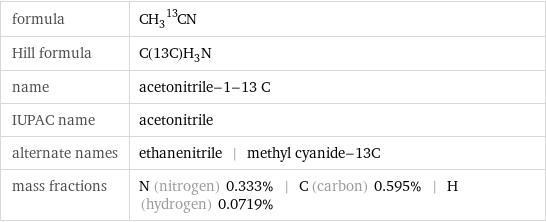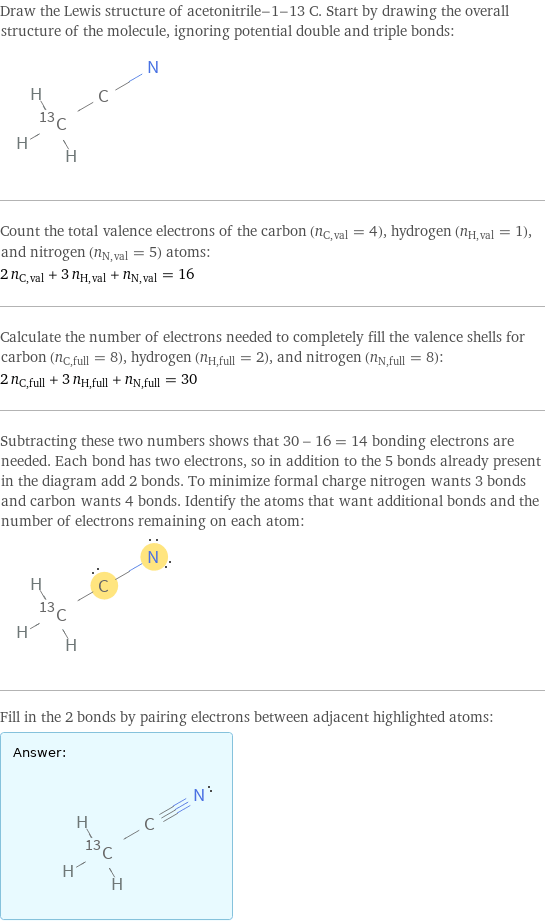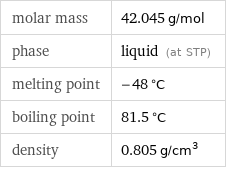Input interpretation

acetonitrile-1-13 C
Chemical names and formulas

formula | CH_3^13CN Hill formula | C(13C)H_3N name | acetonitrile-1-13 C IUPAC name | acetonitrile alternate names | ethanenitrile | methyl cyanide-13C mass fractions | N (nitrogen) 0.333% | C (carbon) 0.595% | H (hydrogen) 0.0719%
Lewis structure

Draw the Lewis structure of acetonitrile-1-13 C. Start by drawing the overall structure of the molecule, ignoring potential double and triple bonds: Count the total valence electrons of the carbon (n_C, val = 4), hydrogen (n_H, val = 1), and nitrogen (n_N, val = 5) atoms: 2 n_C, val + 3 n_H, val + n_N, val = 16 Calculate the number of electrons needed to completely fill the valence shells for carbon (n_C, full = 8), hydrogen (n_H, full = 2), and nitrogen (n_N, full = 8): 2 n_C, full + 3 n_H, full + n_N, full = 30 Subtracting these two numbers shows that 30 - 16 = 14 bonding electrons are needed. Each bond has two electrons, so in addition to the 5 bonds already present in the diagram add 2 bonds. To minimize formal charge nitrogen wants 3 bonds and carbon wants 4 bonds. Identify the atoms that want additional bonds and the number of electrons remaining on each atom: Fill in the 2 bonds by pairing electrons between adjacent highlighted atoms: Answer: | |
Basic properties

molar mass | 42.045 g/mol phase | liquid (at STP) melting point | -48 °C boiling point | 81.5 °C density | 0.805 g/cm^3
Units

Liquid properties (at STP)

density | 0.805 g/cm^3 refractive index | 1.344
Units

Non-standard atom properties

C-13 | 1
Chemical identifiers

CAS number | 31432-55-0 PubChem CID number | 10866249 PubChem SID number | 24872032 SMILES identifier | CC#N InChI identifier | InChI=1/C2H3N/c1-2-3/h1H3/i1+1 MDL number | MFCD00001879
Safety properties

flash point | 5.556 °C